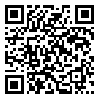Volume 8, Issue 2 (5-2021)
JROS 2021, 8(2): 57-64 |
Back to browse issues page
Download citation:
BibTeX | RIS | EndNote | Medlars | ProCite | Reference Manager | RefWorks
Send citation to:



BibTeX | RIS | EndNote | Medlars | ProCite | Reference Manager | RefWorks
Send citation to:
Taghizadeh Kerman M, Yalfani A, Ebrahimi Atri A, Mousavi S H. Knee Muscle Activity During Jump Landing Tasks Following Anterior Cruciate Ligament Reconstruction: A Review Study. JROS 2021; 8 (2) :57-64
URL: http://jros.iums.ac.ir/article-1-2152-en.html
URL: http://jros.iums.ac.ir/article-1-2152-en.html
1- Department of Corrective Exercises and Sport Injuries, Faculty of Physical Education and Sport Sciences, Bu-Ali Sina University, Hamedan, Iran.
2- Department of Exercise Physiology, Faculty of Sport Sciences, Ferdowsi University of Mashhad, Iran.
3- Department of Health and Sport Medicine, Faculty of Physical Education and Sport Sciences, University of Tehran, Iran.
2- Department of Exercise Physiology, Faculty of Sport Sciences, Ferdowsi University of Mashhad, Iran.
3- Department of Health and Sport Medicine, Faculty of Physical Education and Sport Sciences, University of Tehran, Iran.
Abstract: (1777 Views)
Background: Changes in knee muscle activity remain years after Anterior Cruciate Ligament (ACL) surgery. However, the literature on the successful or unsuccessful recovery of lower limb muscle activation during jump landing is controversial.
Objectives: The present review intended to compare the surface Electromyography (EMG) of knee muscle activity in healthy and Anterior Cruciate Ligament Reconstruction (ACLR) groups in jump landing tasks.
Methods: PubMed, Embase, and Web of Science databases were searched papers from 1990 to 2020 using the keywords “anterior cruciate ligament or ACL, EMG or Electromyography or Muscle activation, Landing or Jumping or Hopping”. After screening the titles, abstracts, and full text of the collected articles, 7 studies met the inclusion criteria of this review. The Critical Appraisal Skills Program tool was used for the quality assessment of the included papers.
Results: The present research results suggested earlier onset muscle activity for quadriceps and hamstring in ACLR subjects, compared to healthy subjects. Furthermore, the ratio of activation of quadriceps/hamstring in the ACLR group was higher than that in the healthy individuals considering the type of rehabilitation, the time elapsed from surgery, and gender. The methodological quality of the observational studies ranged from 6 to 8 out of 12 that reflects the overall quality of the methodology.
Conclusion: According to this review, we can conclude that the ACLR group exhibited different neuromuscular strategies in the pre-landing phase that might increase the recurrent risk of ACL injury.
Objectives: The present review intended to compare the surface Electromyography (EMG) of knee muscle activity in healthy and Anterior Cruciate Ligament Reconstruction (ACLR) groups in jump landing tasks.
Methods: PubMed, Embase, and Web of Science databases were searched papers from 1990 to 2020 using the keywords “anterior cruciate ligament or ACL, EMG or Electromyography or Muscle activation, Landing or Jumping or Hopping”. After screening the titles, abstracts, and full text of the collected articles, 7 studies met the inclusion criteria of this review. The Critical Appraisal Skills Program tool was used for the quality assessment of the included papers.
Results: The present research results suggested earlier onset muscle activity for quadriceps and hamstring in ACLR subjects, compared to healthy subjects. Furthermore, the ratio of activation of quadriceps/hamstring in the ACLR group was higher than that in the healthy individuals considering the type of rehabilitation, the time elapsed from surgery, and gender. The methodological quality of the observational studies ranged from 6 to 8 out of 12 that reflects the overall quality of the methodology.
Conclusion: According to this review, we can conclude that the ACLR group exhibited different neuromuscular strategies in the pre-landing phase that might increase the recurrent risk of ACL injury.
Type of Study: Review Paper |
Subject:
Knee surgery
Received: 2021/01/19 | Accepted: 2021/04/24 | Published: 2021/05/1
Received: 2021/01/19 | Accepted: 2021/04/24 | Published: 2021/05/1
| Rights and permissions | |
 |
This work is licensed under a Creative Commons Attribution-NonCommercial 4.0 International License. |









